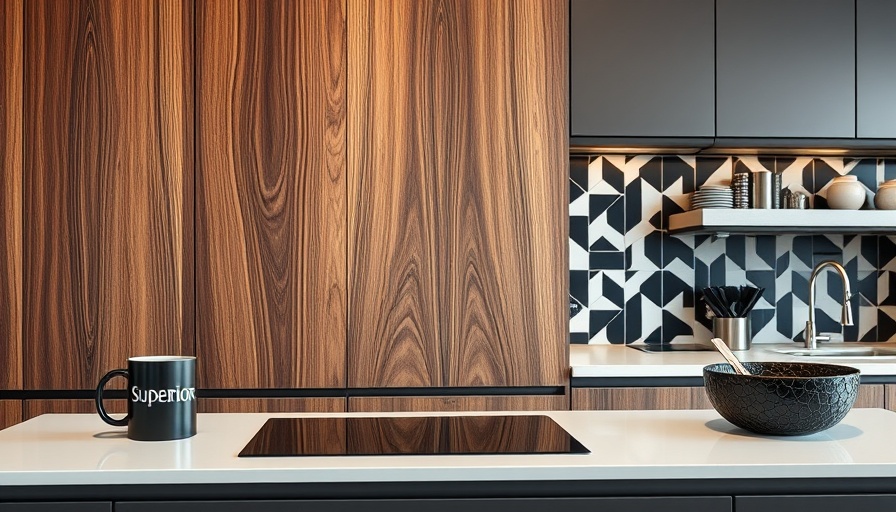
The Unique Beauty of Wood in Kitchen Design
When it comes to crafting an upscale kitchen, few materials can boast the natural allure of wood. Though every tree is distinct, the variations in grain, texture, and color strengthen the character of wood products, making them a splendid choice for kitchens. These features aren’t imperfections; instead, they serve as a testament to the authenticity of the wood, enhancing its beauty and contributing to a unique kitchen design.
Understanding Wood Cabinet Construction: Choosing the Right Style
In kitchen redesign, different styles of wood cabinetry can be utilized to complement various design aesthetics. Whether it’s solid wood or wood veneer, understanding the construction can greatly influence both the visual appeal and the budget of your remodel. For instance, wood veneer tends to absorb stains better than solid wood, often giving a richer appearance. Choosing wider stiles and rails can help minimize the visual contrast, making it a preferable option for those with a discerning eye for detail.
Lighting and the Perception of Color in Wood
Color can be deceptively subjective. The appearance of cabinetry can significantly change based on the lighting conditions in a kitchen. Different artificial lights—LED, incandescent, or fluorescent—can alter how wood's natural stains and tones are perceived. Homeowners are advised to view full sample doors in their kitchen's unique lighting to ensure that the chosen wood complements the overall design. Small sample chips may misrepresent the natural hues and depths of color, highlighting the importance of accurate representation in your design choices.
Natural Aging of Wood: Embracing the Evolution of Material
One of the most charming aspects of wood cabinetry is its ability to mature over time. Exposure to sunlight and humidity can affect the color and character of wood, resulting in a natural patina that many homeowners find appealing. For example, Cherry wood, known for darkening with age, offers the opportunity for a dynamic aesthetic that changes throughout the years, making it a deeply personal element of any kitchen. Understanding these changes helps inform decisions about the best wood species for longevity and visual impact.
Unique Characteristics of Different Wood Species
Choosing the right wood species for cabinetry goes beyond aesthetic appeal. Each variety brings its own set of unique characteristics, such as natural streaks, knots, and color variations. For example, oak is not only durable but also features an open grain that allows for different stain depths to shine through. Homeowners who value originality and natural character in their kitchen spaces benefit immensely from exploring the spectrum of wood species available for custom kitchen cabinets.
Is Wood Right for Your Kitchen?
Ultimately, the decision to incorporate wood cabinetry should align with your design values. If a distinctive, natural aesthetic appeals to you, wood is a prime candidate. On the contrary, those desiring more uniformity may lean towards engineered materials or painted cabinets. With wood being sensitive to environmental changes, maintaining consistent humidity levels in the home is crucial to protect cabinetry from deterioration. Having a keen awareness of the material's characteristics helps ensure a successful and satisfying kitchen remodel.
Conclusion: Elevating Kitchen Design with Wood
Investing in quality wood cabinetry not only enhances the visual appeal of your kitchen but can also offer longevity and a unique personal signature to your space. By understanding the intricacies of wood, from variations to aging processes, homeowners can make informed choices that align with their design aspirations. Embrace the journey of transforming your kitchen into an elegant haven equipped with the beauty and richness of wood.
 Add Row
Add Row  Add
Add 




 Add Row
Add Row  Add
Add 

Write A Comment